The Google Nexus 9 Review
by Joshua Ho & Ryan Smith on February 4, 2015 8:00 AM EST- Posted in
- Tablets
- HTC
- Project Denver
- Android
- Mobile
- NVIDIA
- Nexus 9
- Lollipop
- Android 5.0
Display
For those that are uninitiated to the world of displays, a display seems relatively simple. After all, it just needs to have high resolution, pretty colors, high brightness, and high contrast. However, there’s a great deal of complexity to this issue. Even excluding the actual structure of a display, the characteristics of a display can strongly affect perception. Poor display calibration, low brightness, high reflectance, and low contrast can all affect the experience. In addition, something as simple as subpixel arrangement and the thin-film transistor design can have significant impacts on viewing angles and battery life.
In order to test these things, we use SpectraCal’s CalMAN 5 Ultimate and X-Rite’s i1pro2 spectrophotometer to ensure accuracy in our testing, in conjunction with subjective testing to get a good idea of overall display performance. As always, we target sRGB gamut and 2.2 gamma as these are the industry standard. While there are many arguments for larger gamuts and different gamma curves, the goal of our display calibration testing is to make sure that a display will be reasonably accurate in its reproduction of content as an artist intended. Without this calibration, videos, photos, and other content can appear "off".
While we still don’t have an accurate reflectance test, I spent a great deal of time wondering why the display on the Nexus 9 seemed to have more distracting glare than most. This was strange to me as the display was obviously laminated with no perceivable viewing angle degradation that comes with non-laminated displays. It seems that whatever material HTC has used to laminate the display isn’t quite ideal in this case, as at some point in the display stack there’s an obvious secondary reflection. This is an issue relating to a lower index of refraction, so it’s likely that some other characteristic was valued over reflectance.
Other than this, the only other immediately noticeable flaw is the display’s backlight bleed. To me, it’s quite obvious that the display gets lighter at the edges much like what I’ve seen on the Nexus 5. It seems that this is related to the backlight configuration, although given the high brightness of the panel I'm not sure that this can be avoided.
Before we get into the objective testing, I also wanted to mention that this display has “dual-domain pixels” similar to the iPad Air 2 and iPhone 6. The level of angling seems to be much more significant though, which seems to make the purple blacks much more obvious, but outside of this shift in black point it’s almost impossible to see shifts in color with changes in viewing angle. The microscope photo combined with some casual examination under sunlight suggests that the digitizer has been integrated into the display for improved clarity. The resolution is also quite high for a tablet, and while I can obviously pick out aliasing when closely examining the display, at a normal viewing distance I don’t really see any of these problems.
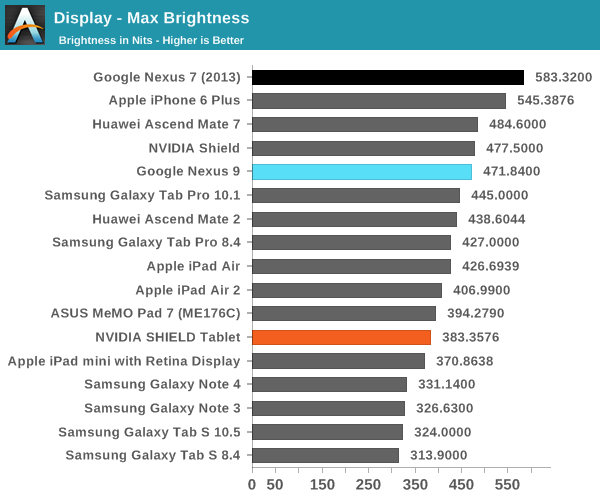
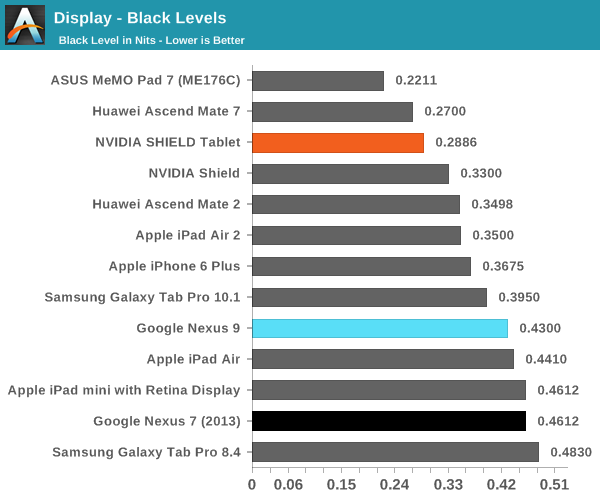
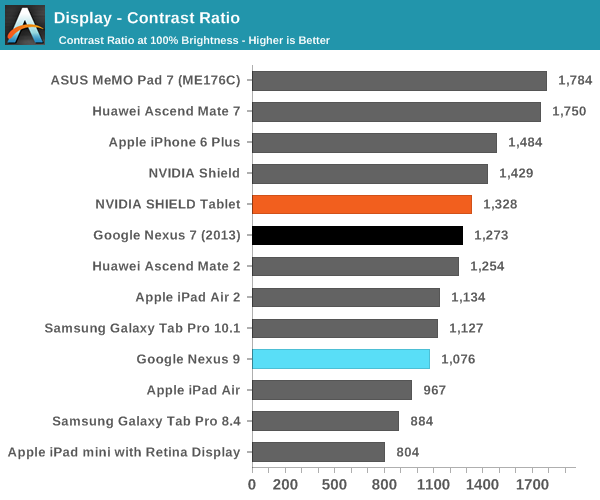
The brightness of the Nexus 9's display ends up higher than what we see with the iPad Air 2. Contrast is approximately equal to what we see in the iPad Air 2, which is good but definitely not the perfect inky blacks that one might be used to from AMOLED.
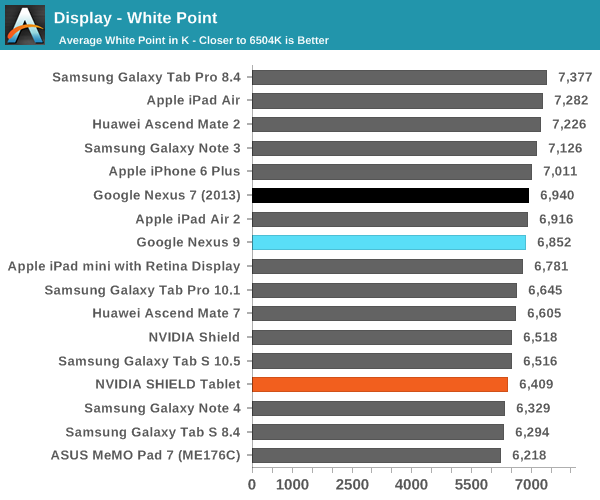
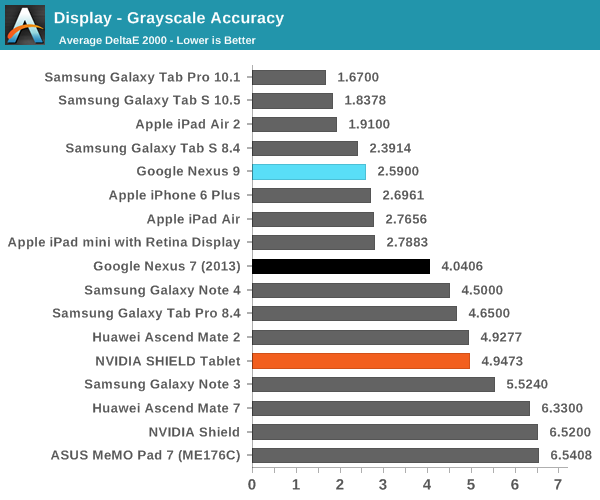
The next aspect of our display test suite is the grayscale test, which looks at the color balance and brightness of various shades of grayscale from black to white. Here, the Nexus 9 really does a great job across the board. If I were to nitpick, there is a bit of extra blue in the display but it’s really nothing worth talking about. Google does seem to consistently favor a lower contrast look when the gamma curve is dead on the mark, but on average it’s close enough to a power 2.2 curve that it doesn’t make a difference when viewing the display.
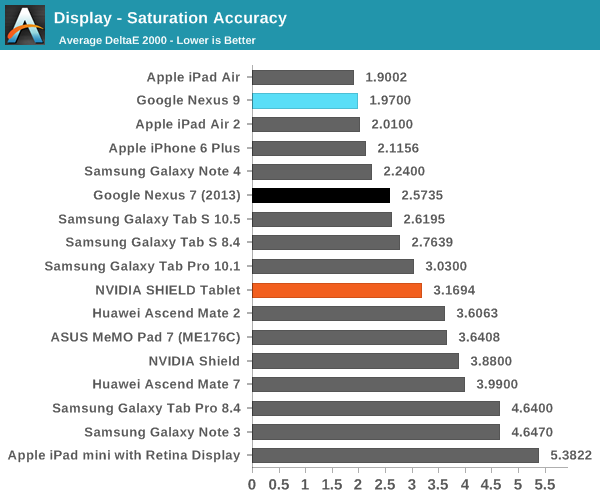
While grayscale is important, colors are really the hardest part to get right in a display. Here, the Nexus 9 does an amazing job in our saturation test. I really don’t have anything else to say here as pretty much everything is on the mark. At this point, it’s pretty clear that most Nexus devices have a strong focus on display quality, and the Nexus 9 is no exception.
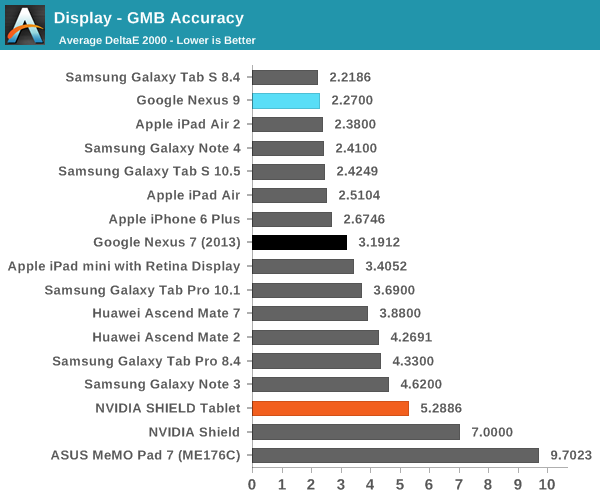
Finally, the Gretag MacBeth test shows that the Nexus 9 is quite accurate with color even outside of the basic primary and secondary colors. There shouldn’t be any issues with viewing content that has high requirements for color accuracy. Overall, the Nexus 9 display is great with only two real issues of note, namely the reflectance issue and the backlight bleed. While neither are deal-breakers, fixing these issues would make this display fall under a short list of the best mobile displays I’ve seen all year. For now, it sits just shy of that list. I definitely have to applaud Google in this case as they haven’t fallen into the trap of wider gamuts, bluer white points, dynamic contrast, and other “features” for the sake of showroom appeal.


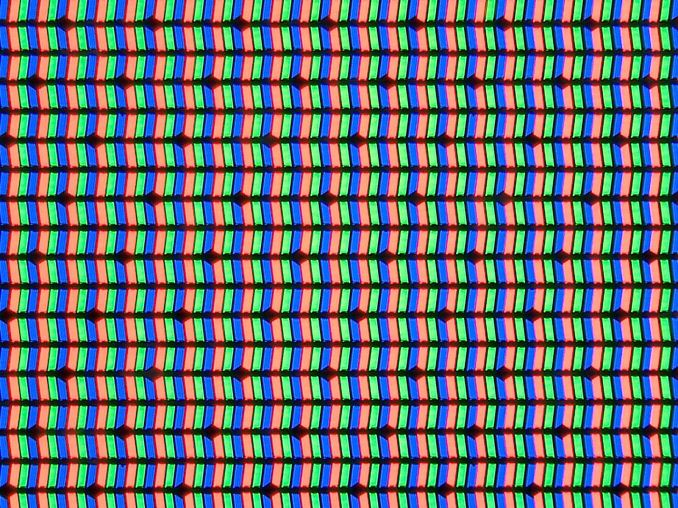

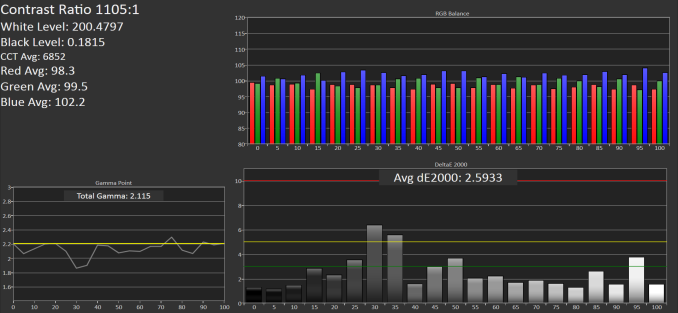
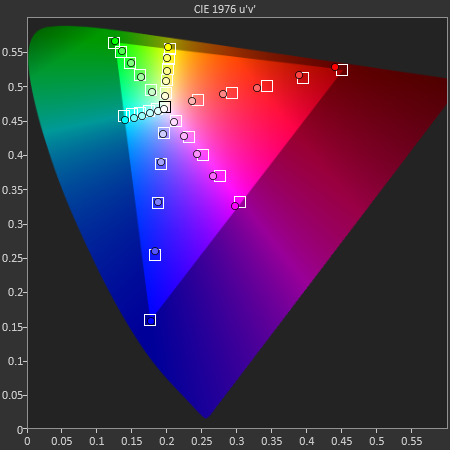
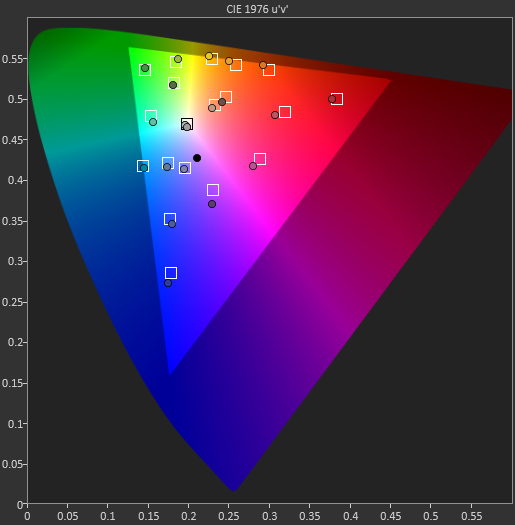








169 Comments
View All Comments
philosofa - Wednesday, February 4, 2015 - link
Anandtech have always prioritised quality, insight and being correct, over being the first to press. It's why a giant chunk of its readerbase reads it. This is going to be relevant and timely to 90% of people who purchase the Nexus 9. It's also likely to be the definitive article hardware and tech wise produced anywhere in the world.I'd call that a win. I just think there's no pleasing everyone, particularly the 'what happened to AT????!? crowd' that's existed here perpectually. You remind me of the Simcity Newspaper article 'naysayers say nay'. No: Yea.
iJeff - Wednesday, February 4, 2015 - link
You must be new around here. Anandtech was always quite a bit slow to release their mobile hardware reviews; the quality has always been consistently higher in turn.Rezurecta - Wednesday, February 4, 2015 - link
C'mon guys. This isn't the freakin Verge or Engadget review. If you want fancy photos and videos with the technical part saying how much RAM it has, go to those sites.The gift of Anandtech is the deep dive into the technical aspects of the new SoC. That ability is very exclusive and the reason that Anandtech is still the same site.
ayejay_nz - Wednesday, February 4, 2015 - link
Release article in a hurry and unfinished ... "What has happened to Anandtech..."Release article 'late' and complete ... "What has happened to Anandtech..."
There are some people you will never be able to please!
Calista - Thursday, February 5, 2015 - link
You still have plenty of other sites giving 0-day reviews. Let's give the guys (and girls?) of Anandtech the time needed for in-depth reviews.littlebitstrouds - Friday, February 6, 2015 - link
No offence but your privilege is showing...HarryX - Friday, February 6, 2015 - link
I remember that the Nexus 5 review came out so late and that was by Brian Klug, so it's really nothing unusual here. This review covers so much about Denver that wasn't mentioned elsewhere that I won't mind at all if it was coming late. Reviews like this one (and the Nexus 5 one to a lesser extent, or the Razer Blade 2014 one) are so extensive that I won't mind reading them months after release. The commentary and detailed information in them alone make them worth the read.UtilityMax - Sunday, February 8, 2015 - link
The review is relevant. The tablet market landscape hasn't been changed much between then and now. Anyone in the market for a Nexus 9 or similar tablet is going to evaluate it against what was available at the time of release.SunnyNW - Sunday, February 8, 2015 - link
Only thing that sucks about these late reviews is if you are trying to base your purchase decision on it especially with holiday season.Aftershocker - Friday, February 13, 2015 - link
I've got to agree, Anandtech have dropped the ball on this one. I always prefer to wait and read the comprehensive Anandtech review which I understand can take a few weeks, but this is simply to long to get a review out on a flagship product. Call me sceptical but I can't see such a situation occurring on the review of a new apple product.